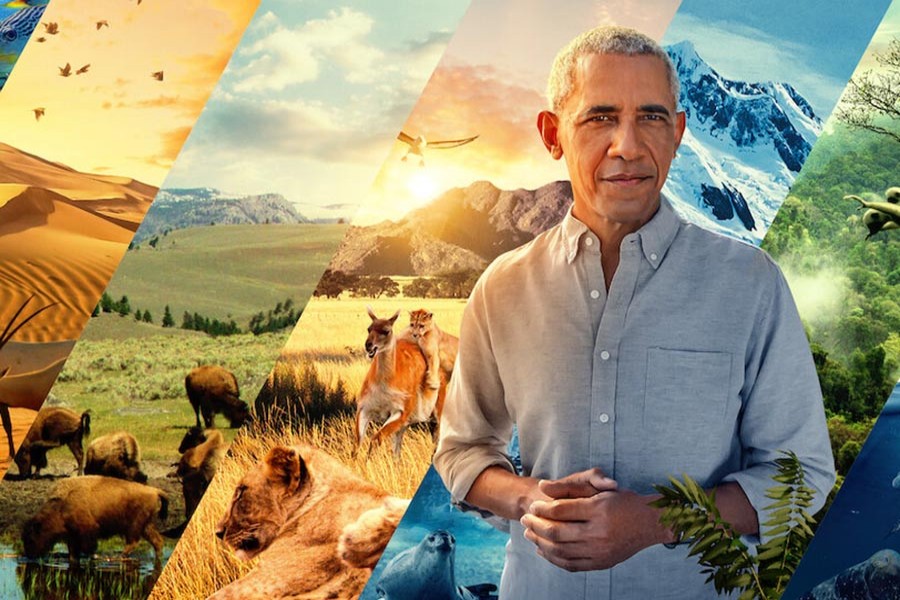Obama’s Netflix series gives a message about saving the environment

Published :
Updated :

Climate change is real. Man-made phenomena like pollution, deforestation etc. have stoked global warming, putting the wildlife and ecosystems at risk. But is the world beyond repair? Can humans save the environment?
Netflix’s latest documentary Our Great National Parks narrates the story of saving the previously endangered species worldwide and tells us, “Yes, there is still hope.”
The show focuses on humankind’s efforts to preserve wildlife around the world. Since the concept of national parks, over a hundred regions worldwide have been declared to be conserved, the majority of them which were announced in the recent 50 years.
Preserving the natural sanctuaries has saved many animals and plants from going extinct, thus saving the natural ecosystem as a whole.
The whole documentary is unfolded by Barack Obama, the former 44th president of the United States. His narrating style seemed to be influenced by Naturalist Sir David Attenborough, who is famous for making people aware of conserving nature with his calm and soothing voice for many decades.
Obama tells the wildlife protecting stories spanning from the rainforests of Indonesia to arid mountainous regions of the Chilean Patagonia. He also connects with these places as he spent many years of his childhood living in countries like Indonesia, Kenya, Hawaii of United States, etc. Hence, they bear a sentimental value to him too.
Many species of animals in those national parks were facing extinction due to artificial reasons like hunting, illegally cutting down habitats for farming, environmental pollution and so on.
But the initiatives taken over the past few decades have seen some effects to save the animals from the brink of extinction, even witnessing a boom in population like the Mountain Gorillas in Rwanda.
Preserving nature through poaching and fishing ban laws saved a colony of over 2 million Albatrosses in Patagonia, an endangered bird species worldwide. Many ancient forests have been eradicated for farming and housing in the last century but conserving a few of them saved some rare species of trees from extinction, even saving the habitats of some exotic mammals on the way.
Our Great National Parks shows the symbiosis between animals and plants by which the ecosystem thrives.
For example, a rare opossum named Monito del Monte ensures the survival of mistletoe plants in the Patagonian forest by eating the fruit seeds. In return, the opossums get their natural diet.
In Tsavo National Park, Kenya, as there is a limited supply of food in the dry season, the hornbill and dwarf mongoose work together to find food and look out their backs from predators in the wild. This shows that symbiosis in nature plays a crucial role in survival.
Symbiosis plays a vital role in humanity’s existence too. As pollution, climate change and global warming are ever-increasing, these natural sanctuaries work as the carbon sink, absorbing the carbon-di-oxide and other greenhouse gases created by humans.
Although humanity may face impending doom by the increase in global temperature, they can help slow down the catastrophe and even save the world.
The documentary reveals stunning footage of rare species that were never seen before. Using new camera technology and advanced drone shots gives the audience clear views of the animals’ movement for the first time. The crew’s effort behind the cinematic shots is worthy of praise.
Our Great National Parks is a remarkably informative show for the audience to be aware of many extinct living species around the world and inspires to protect them.
The show also assures us not to lose hope; the efforts might not be enough for now, but the continuity to strive for the result might stabilize the climate change and be the key to human and nature’s ultimate coexistence.


 For all latest news, follow The Financial Express Google News channel.
For all latest news, follow The Financial Express Google News channel.